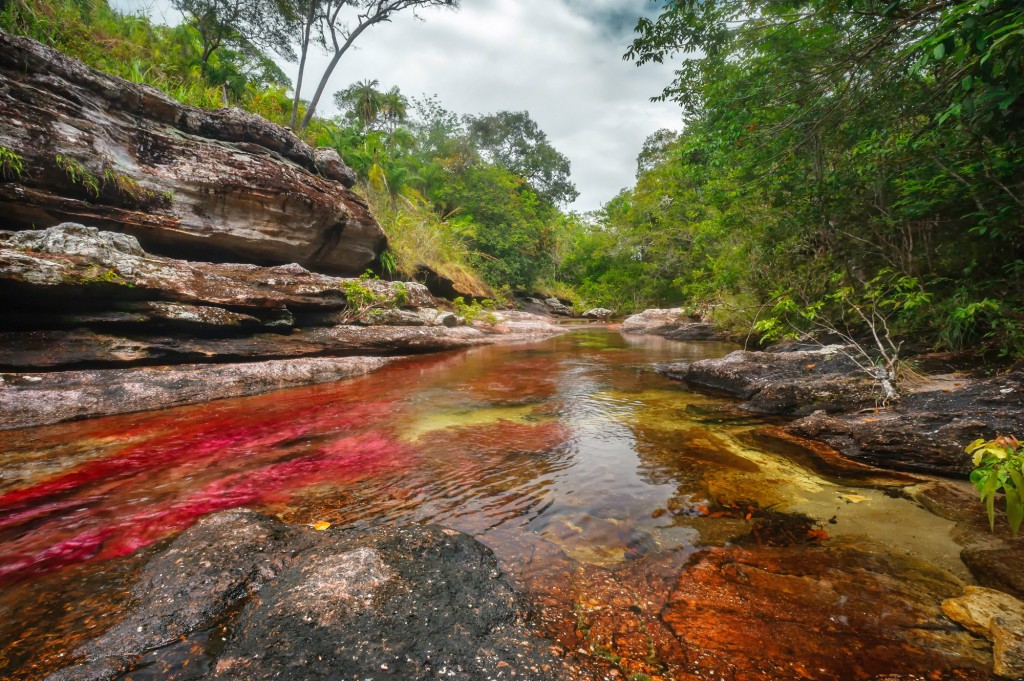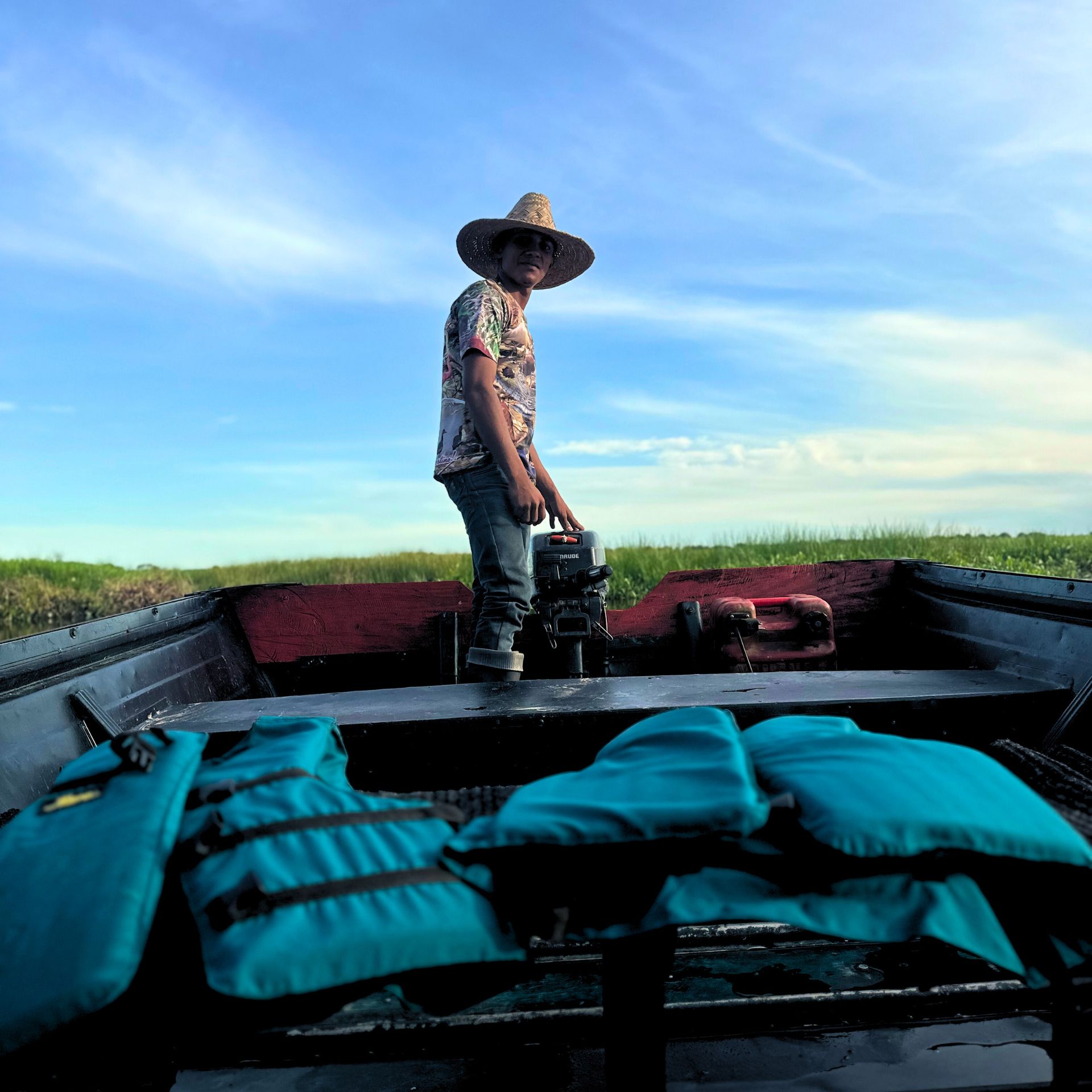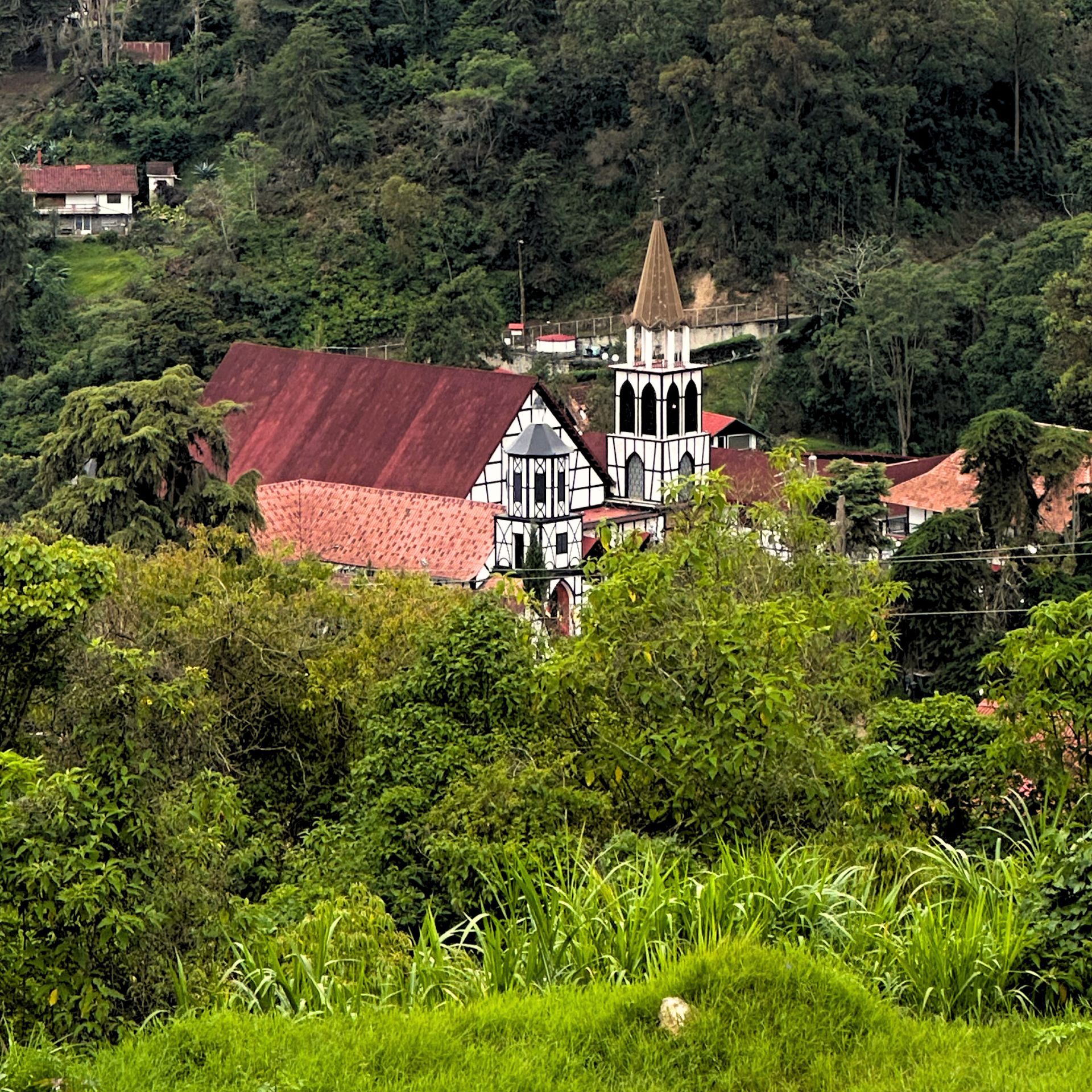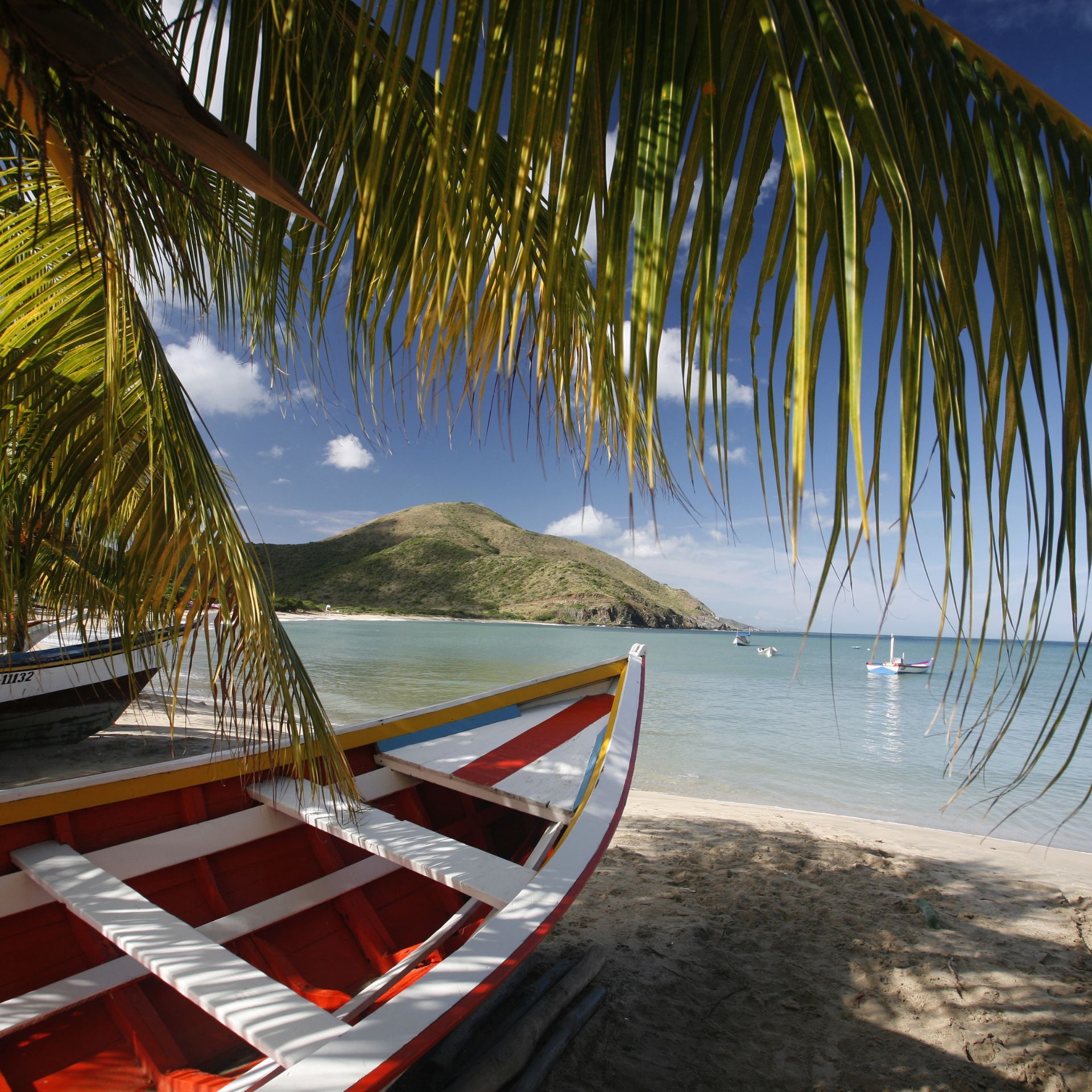From the vast savannas to the deep rainforest, few countries on earth offer adventure and natural experiences as raw as those found in Guyana.
From the first moment I stepped off the plane, I felt I was at the gateway to the Amazon. The temperature was hot and humid, soaking my shirt with sweat. At the same time, I was able to hear birds singing and smell the forest around me. This was also the first moment I truly felt far away from the Berlin winter and immersed in a new country full of new flavors, colors, and experiences.
I was unsure of what to expect in Guyana, as it is one of the least traveled countries in the world, yet also one of the greenest. This was one of the biggest appeals for me to explore. Guyana is South America’s undiscovered gem, and in this guide, I will share my 10-day journey through this ecotourism best-kept secret.
Be connected at all times in Guyana at all times.
I recommend an e-SIM with Airalo. With them, I bought a plan of 10 GB for my whole stay in most countries.
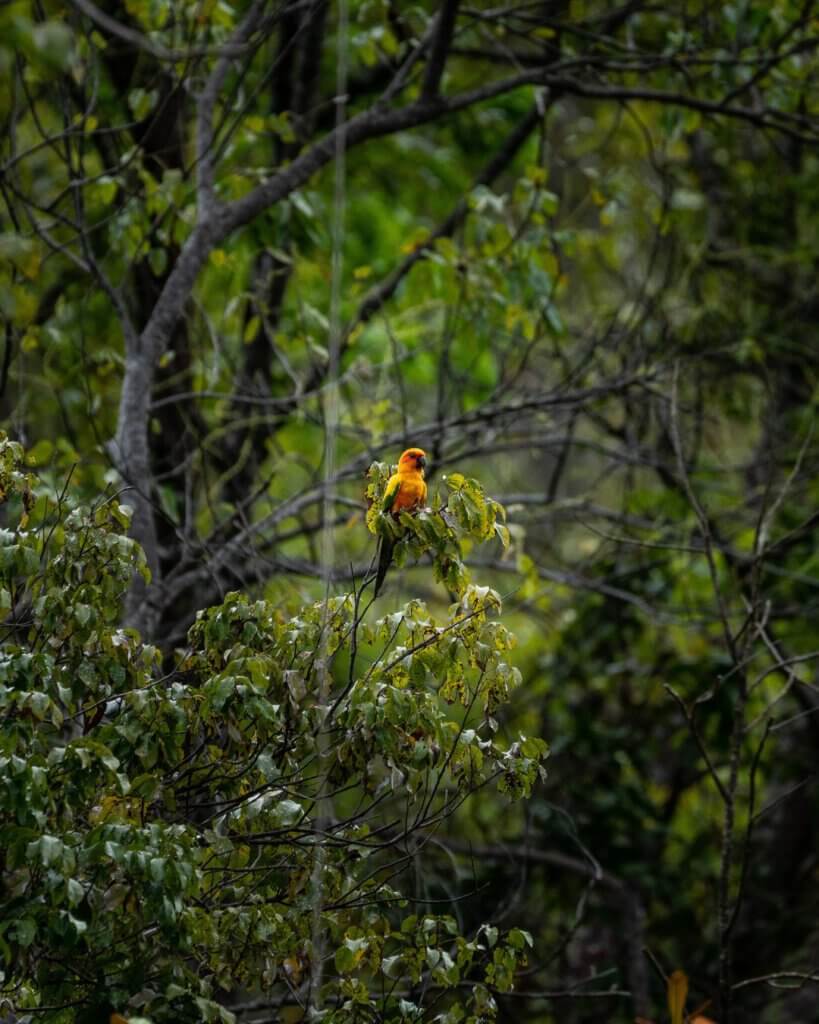
Understanding Guyana
Guyana is unlike any other country in South America as it is the only English-speaking nation on the continent and exudes a different vibe. Like other countries in the region, Guyana has experienced political tensions and instability in the past. However, years of inaccessibility have turned it into an off-the-beaten-path paradise on earth.
This is the country where a 50-meter waterfall in the middle of the rainforest is considered a mere skipping stone, and traveling along the branches of the Amazon is just part of everyday life. Guyana is also a complex place where people from all over the world have found a home, and cultural traditions have been respected and celebrated for decades.
True, Guyana is remote, muddy, and challenging to navigate, but those who persevere will discover one of the world’s last remaining natural wonders, unspoiled and waiting to be explored. Although ten days in Guyana is barely enough to see all that the country hides, I was still able to explore a diverse range of landscapes and get deeper in understanding Guyana’s culture.
From vast savannas to dense rainforests and breathtaking waterfalls, I had the chance to visit the Rupununi Savanna in southern Guyana, marvel at the Kaieteur Falls, which are the tallest single-drop waterfalls in the world, located in the Kaieteur National Park, and venture deep into the country’s dense rainforests. During my trip, I had the incredible opportunity to spot otters, caimans, anteaters, monkeys, and a wide variety of tropical birds. Yet, despite all that I saw and experienced, I felt that I had barely scratched the surface of this extraordinary country.
Curious to explore Guyana by yourself? Let me tell you where you need to go
Read more: How To Travel Overland From Guyana To Suriname
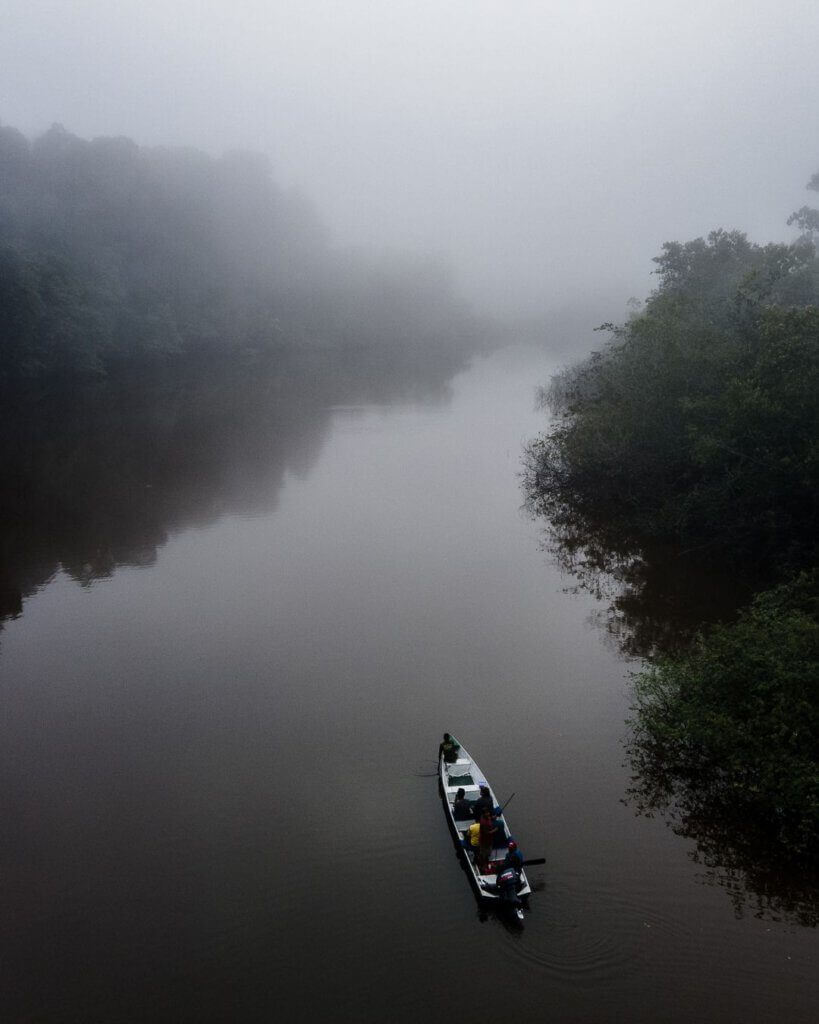
Marvel at Kaieteur Falls
The place to see the tallest single-drop waterfall in the world
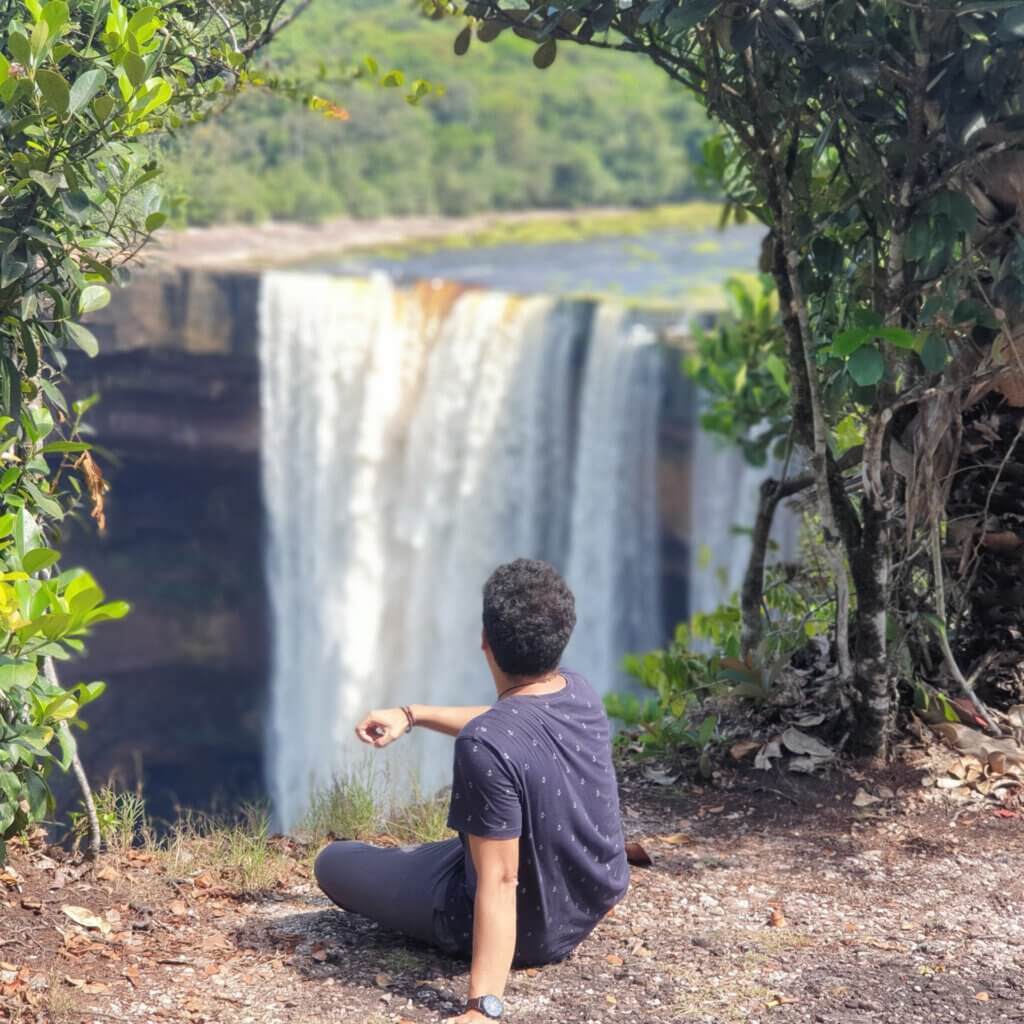
From the moment your 12-seater plane passes over Kaieteur Falls, you know you are in for something special. It is one of the most beautiful places I have ever been to and one of the last remaining untouched natural wonders that you can easily visit by plane. Kaieteur Falls should be at the top of the bucket list for any traveler, and for me, it was a once-in-a-lifetime experience.
Unlike Iguazú Falls or Niagara Falls, where tourists flock to the waterfalls and you can barely have time for yourself, Kaieteur Falls is only available for a handful of tourists who visit every day and want to experience true nature without having other people pushing back and waiting for their turn to see.
I visited Kaieteur Falls on a day trip from Georgetown, which required a 45-minute flight on a charter plane. But travelers can also opt for a five-day hike through the jungle. I have written a full article about how to visit Kaieteur Falls step-by-step. Take a look if you want to learn more about it.
How to get there:
Day tours have to be organized in advance. Once you arrive, you will have approximately 2 hours to explore the waterfalls by yourself.
How much does it cost:
Tours to Kaieteur Falls start at 200-250 USD and can go up to 600-800 USD if you opt for the five-day trek. These can be scheduled directly with local airlines or tour operators.
Where can you stay:
For those who want to stay overnight in Kaieteur, you will have to arrange it completely independently. I have heard about a camp located in a nearby village that charges only a few bucks for accommodation. However, you will have to bring absolutely everything and arrange your own transportation back to Georgetown.
Read more: A step-by-step guide to visit the Kaieteur Falls
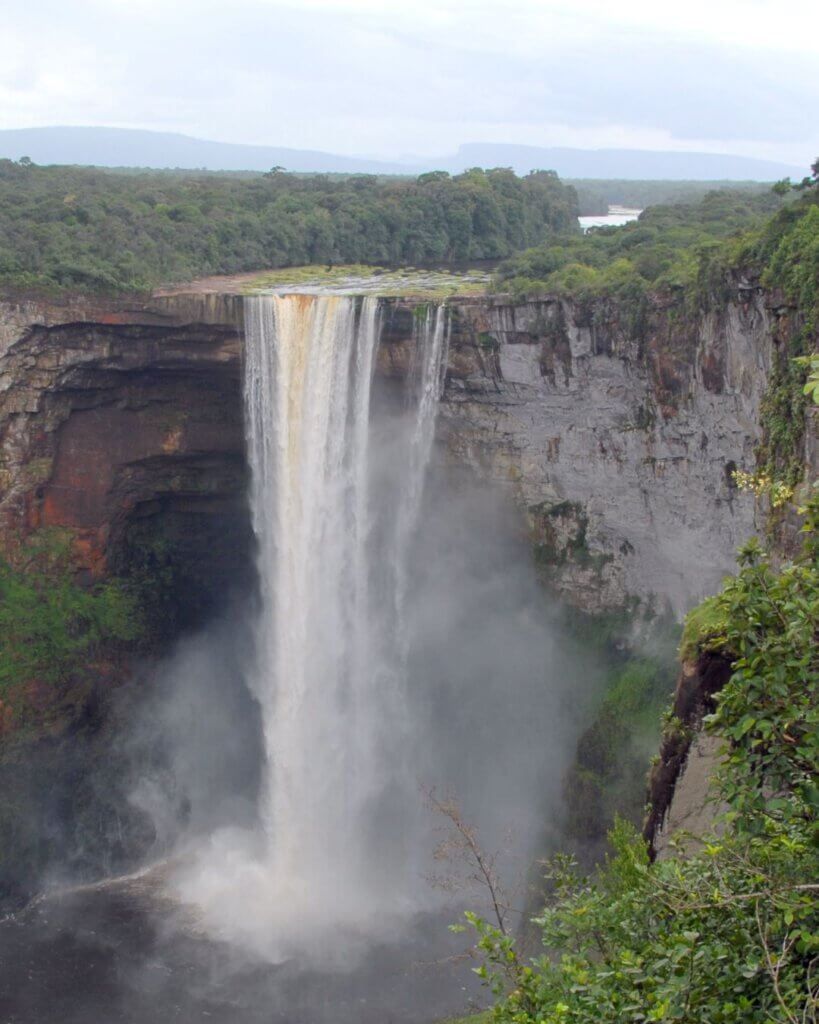
Spot Wildlife at the Rupununi Rainforest
The place to spend the night among caimans, anacondas, and tarantulas
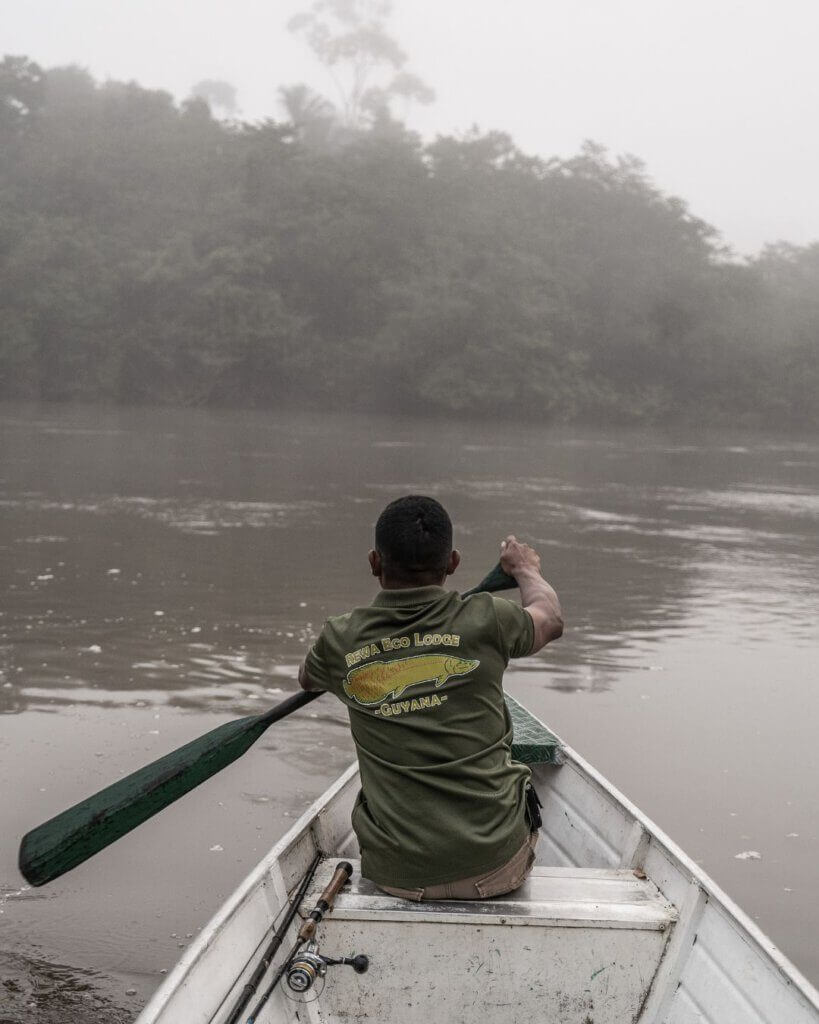
Navigating through the Rupununi feels like entering another era, where America had not yet been colonized, and Spanish conquistadors were exploring unknown lands. You are surrounded by dense forest, and your only companions are the millions of birds and insects that you can hear from a distance. The climate is hot, and the air is heavy. This is South America undiscovered, and nature lovers can live their wildest dreams.
This is also one of the best places for nature photographers in the world. Several dozens of new species, yes! new species, are discovered every year in these forests, and photographers and videographers from National Geographic and BBC love to spend their private time here. For those into wildlife photography, the Rupununi rainforest is perfect for spotting the black caiman, which I probably saw at least 100 times, as well as the giant otter or anaconda.
One of the best activities I did in this part of the world was going fishing. This is probably one of the few places where you can catch piranhas, something I was definitely not familiar with, and was extremely intimidating at the beginning.
How to get there:
Charter flights scheduled by tour operators will take you to the nearest landing strip. From there, expect to take boat rides for 4-5 hours to get anywhere. It is quite an exhausting trip to reach this part of Guyana. However, being in the middle of the jungle for so long is what makes this an adventure destination.
How much it costs:
Entering Guyana’s forest is pricey. Basic infrastructure is basically nonexistent, and everything needs to be brought from Georgetown by boats. A few days in Rupununi can cost up to a couple of thousand euros, and if you try to do it on the lowest budget possible, still expect to pay around 200-300 USD per day.
Where can you stay:
There are several eco-lodges around the area, some with just some hammocks to spend the night, while others have full infrastructure and even internet. I stayed at the Rewa Eco Lodge, which was one of the best-equipped lodges in the region, but I also spent one night in the middle of nowhere on a hammock. A stay in Rupununi can be as comfortable or as simple as you want.
Read more: Protecting Guyana’s pristine landscape – A never-ending challenge
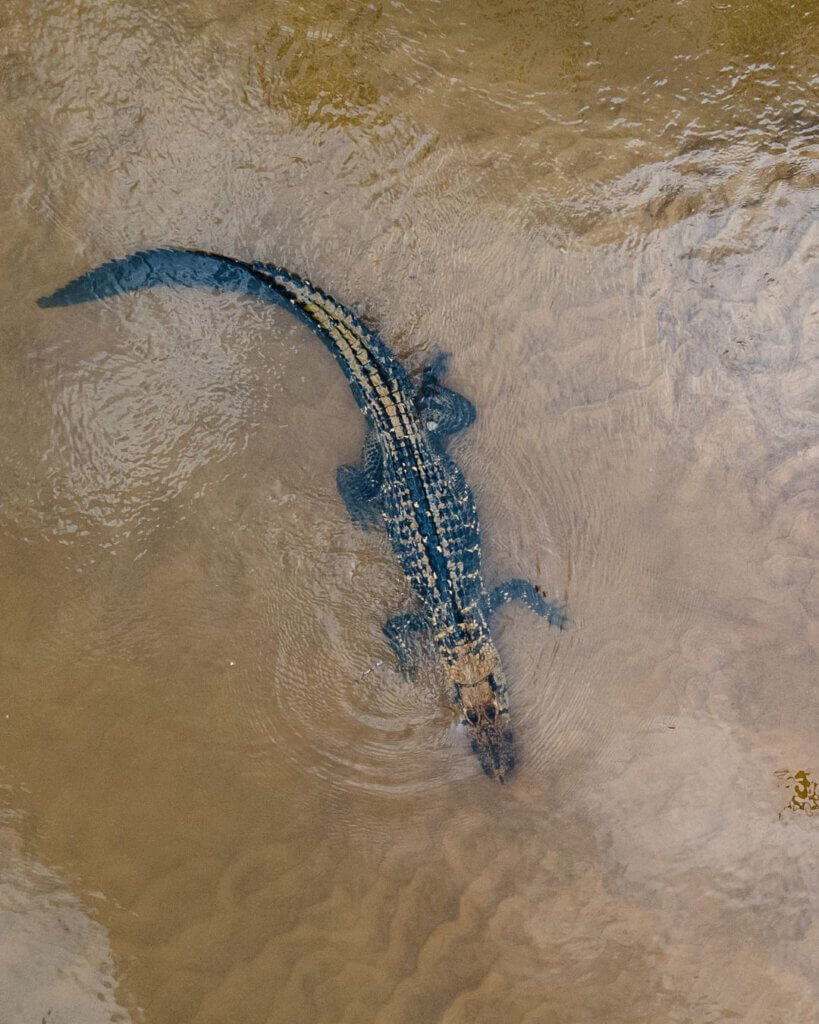
Gallop through the savannah
The place to learn more about Guyana’s cultural heritage
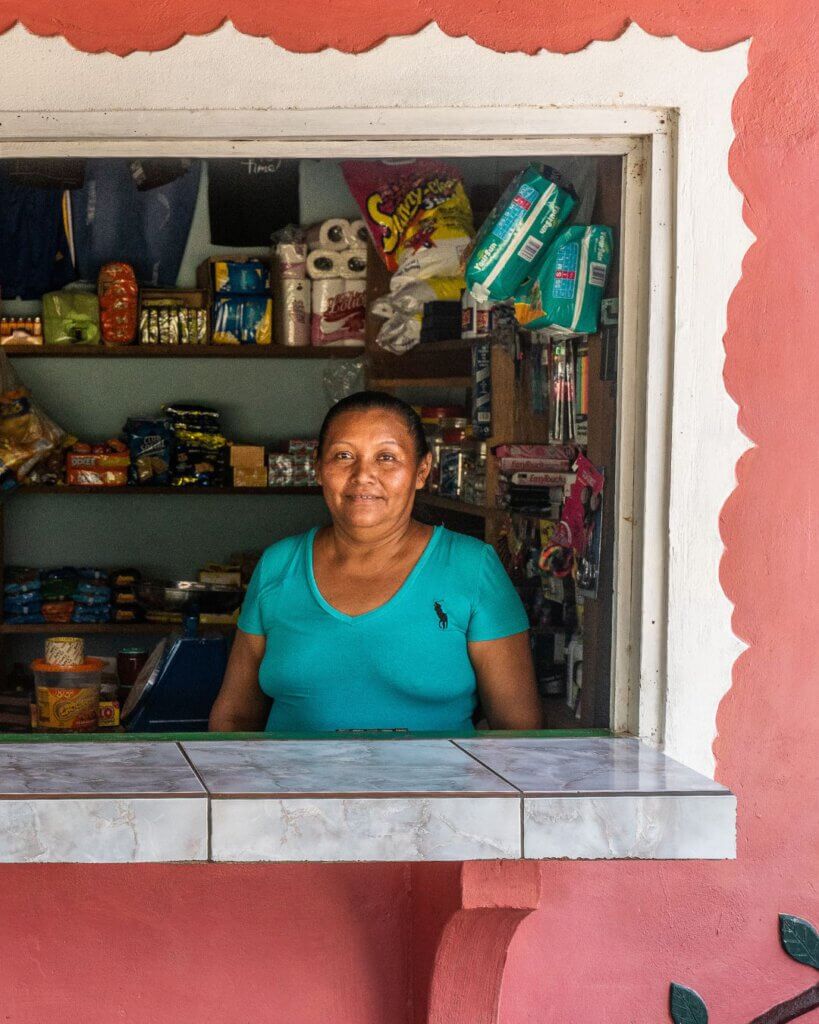
Standing on top of a vehicle and gazing at the never-ending horizon of Guyana’s savannah, you get a true sense of how small we are. This is a land of extremes, where people and wildlife have adapted to the harshest conditions in their own unique ways.
The savannah stretches as far as your eyes can see, making you feel free to drive anywhere you wish. I visited the Rupununi savannah, one of South America’s last and largest intact savannah ecosystems, and learned about the indigenous communities that call this area home, including the Wapishana, the Makushi, and the Patamona.
As a bonus, I also fulfilled my dream of becoming a cowboy for a day, riding horses through the savannah in search of the endangered anteater. This is one of the few places in the world where you can spot wild anteaters, and I was determined to capture one on camera.
How to get here:
The most efficient and affordable way to reach this part of Guyana is by flying from Georgetown to the border town of Lethem, then using private or public transportation to get around. Flights from Georgetown to Lethem start at $100 USD and depart once daily.
How much it costs:
Unlike in the rainforest, getting around this part of Guyana won’t be your biggest expense. However, fun activities like wildlife spotting and galloping around the savannah can still cost a couple of hundred dollars. Accommodation can easily be adapted to your budget and quality.
Where to stay:
Many lodges offer their own activities included in the accommodation. While these lodges start at around $150-$200 USD per night, most include all meals, fishing, wildlife spotting, boat rides, and horseback riding. I stayed at the Walkin Ranch, a wild west-style ranch in the middle of nowhere that perfectly suited the atmosphere of the region.
Read more: What to do in Georgetown, Guyana
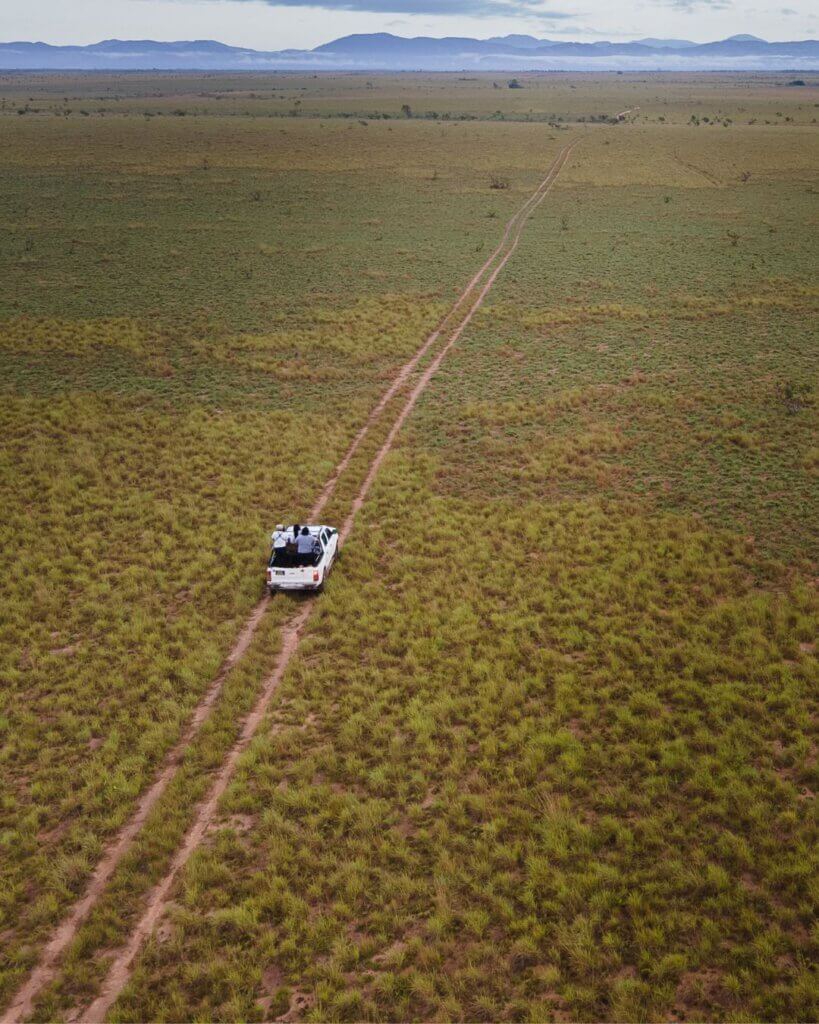
NOTE: Exploring Guyana independently can be expensive or time-consuming. Booking with a tour operator is the best way to travel around the country. Local tour operators will adapt your budget to your priorities and get the best deal available. After checking out most places I visited, I found that planning independently would end up being more expensive or require spending several days asking around and traveling overland.
Read more: Best Things To Do In Paramaribo, Suriname


